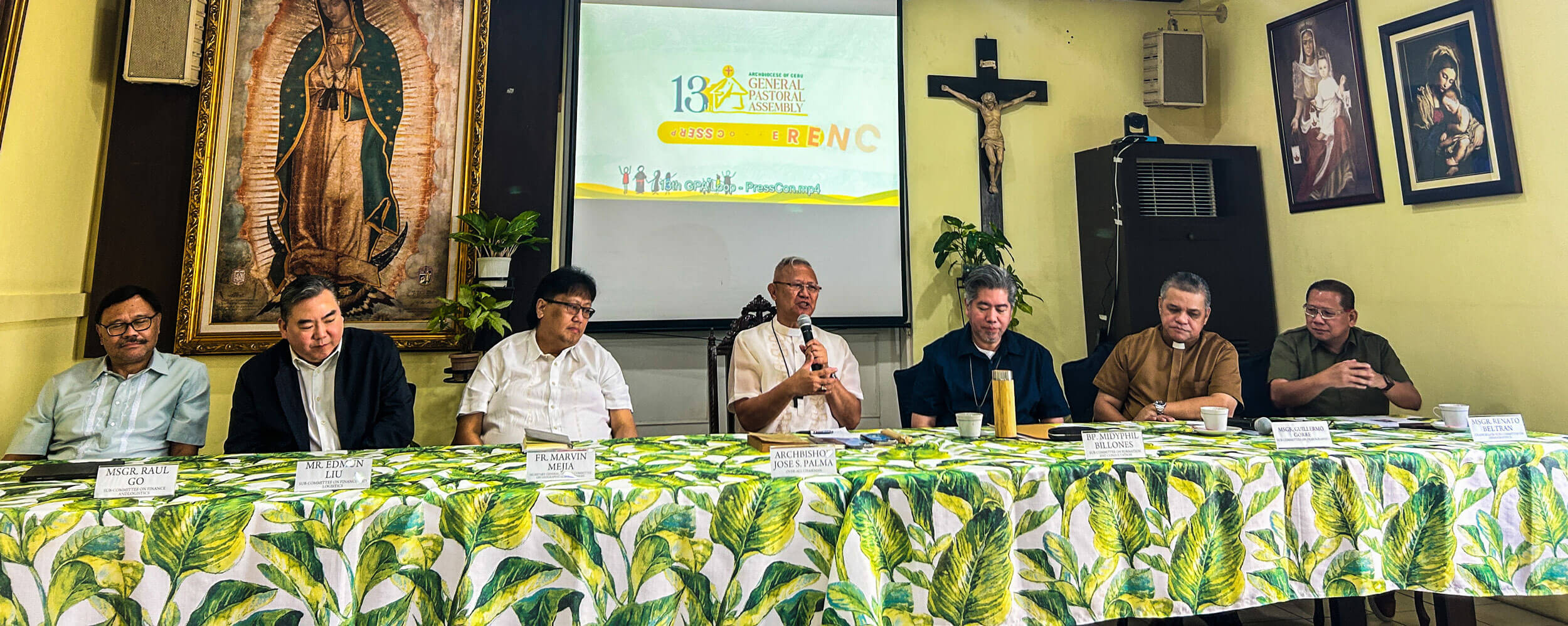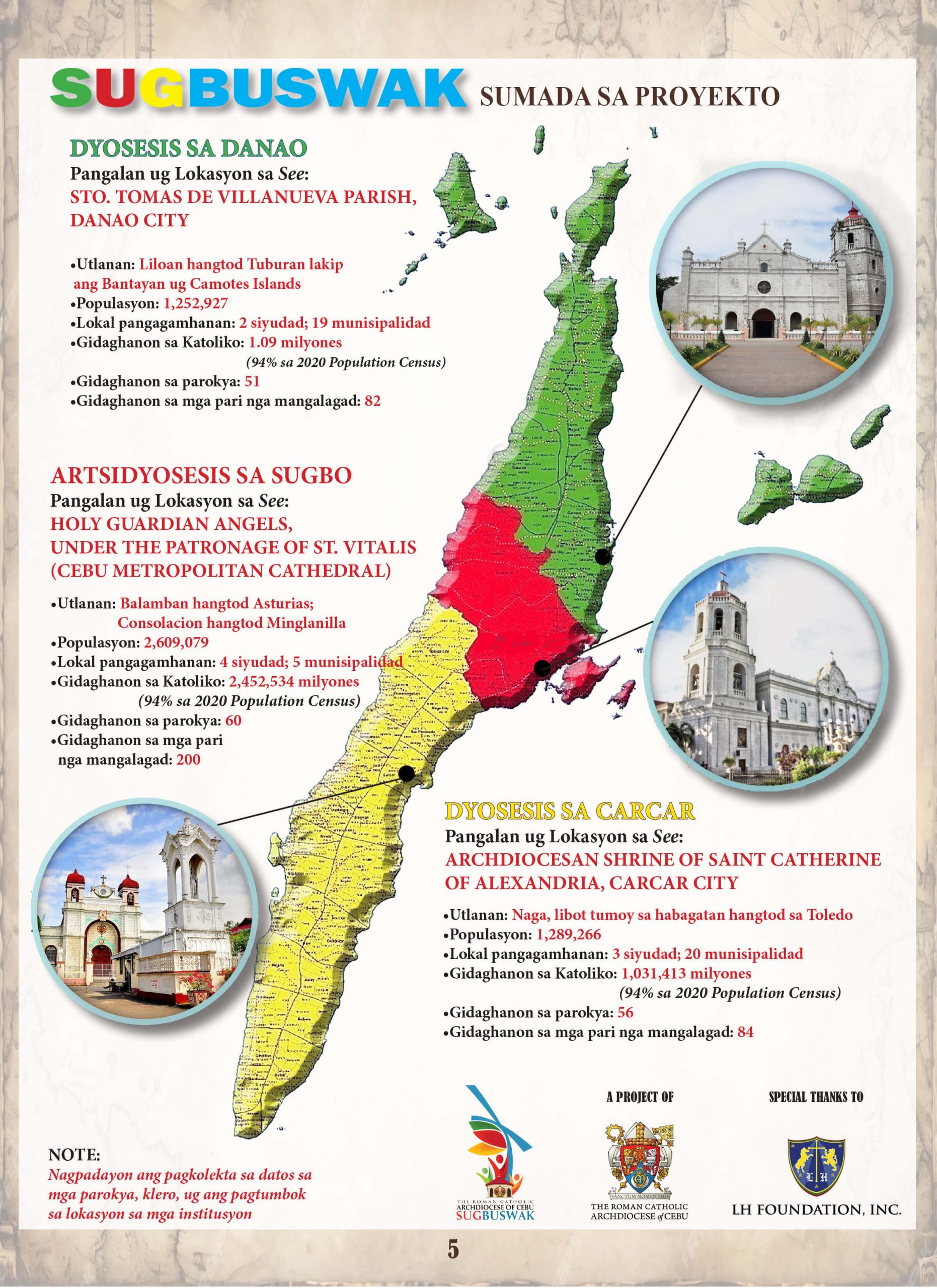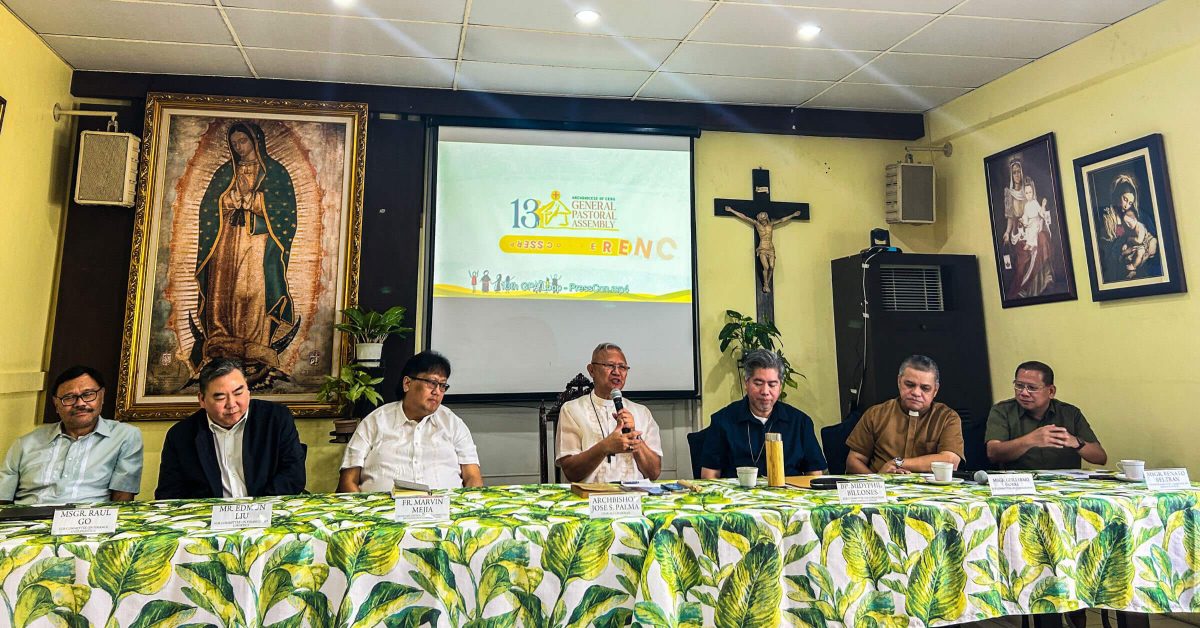From a feasibility study, the breakup of the Archdiocese of Cebu into three new territories is now a proposal that will be presented again to the Catholic Bishops’ Conference of the Philippines (CBCP) in January and finally submitted to the Vatican for approval shortly after.
A three-day General Pastoral Assembly (GPA) organized by the Archdiocese of Cebu discussed the feasibility study conducted this year and approved the proposal to erect the Dioceses of Carcar in the south and Danao in the north. The Archdiocese of Cebu will be left with the metropolitan area comprising the tri-cities of Cebu, Mandaue, and Lapu-Lapu up to the towns of Balamban, Asturias, Consolacion, and Minglanilla.
The GPA was held from November 14 to 16 at the Oakridge Business Park in Mandaue City.
More responsive church
The division of the Archdiocese of Cebu will lead to a church that is more responsive to the needs of both its clergy and laity, officials said in a press conference at the Archbishop’s Residence last Friday.

Although church officials said the GPA and the process of Sugbuswak, the name of the move to break up the archdiocese, was a “demonstration of the church in synodality,” they admitted to the lack of proposals coming from the lay. Fr. Marvin Mejia, the chairman of the sub-committee on geographical boundaries, said the proposals from the lay will be added to the document before it is sent to the CBCP and then Rome.
Lay representatives to the GPA, including prominent retired Cebuano judges Supreme Court Chief Justice Hilario Davide Jr. and Simeon Dumdum Jr, pointed out the absence of the voice of the lay. Journalist Eileen Mangubat, who attended the GPA as lay representative, described the document as “clergy-centric” during the plenary discussion.
Cebu Archbishop Jose Palma then asked vicar general Msgr. Rogelio Fuentes to convene the Commission on Laity, where the latter is spiritual director, and come up with additional proposals that will be added to the document.
The discussion was closed and Davide asked that rather than raise their hands to vote on the historic proposal, the passage be deemed unanimous and for everyone to stand to signify approval.
Sugbuswak timeline
Last Friday, Archdiocesan officials held a press conference at the Archbishop’s Residence on D. Jakosalem St. in Cebu City to announce the latest development of the move that started on December 31, 2022 with an announcement during the New Year’s Eve mass.
The CBCP approved of the plan to break up the archdiocese during its 126th plenary assembly held last July 8 to 10 in Kalibo, Aklan.
The Archdiocese then held a Day of Prayer and Discernment on September 19 where the clergy was apprised of the study on the division of the archdiocese. Palma then held district consultations in preparation for the GPA.
Palma said that ultimately, the erection of new dioceses will be up to Pope Francis. The breakup was first raised officially during the Cebu Archdiocesan Priests’ Congress on August 20, 2002 in Cebu City. It had among its recommendations the conduct of a study “on the viability and practicality of partitioning the Archdiocese into three.”

Palma said that from the time of the priests’ congress until this year, the various events in the archdiocese, including the 500th Year of Christianity celebration, precluded them from working on the partitioning. But he said the apostolic nuncio, whom he described as carrying the voice of Pope Francis, had been following up on the move.
There is “no specific mathematical formula” or Church regulations on the growth of dioceses and their division, said Msgr. Raul Go.
Better pastoral management
Go is a canon lawyer and the chair of the finance and logistics sub-committee of the Sugbuswak group. He said in an interview that dioceses that grow too big usually get divided. As comparison, Go cited the Archdiocese of Ozamiz which has fewer than 50 priests. Cebu, on the other hand, has 380 diocesan priests, making it the largest in the country. The Archdiocese of Manila, Go said, has been divided into Caloocan, Novaliches, Cubao, Paranaque, Pasig, and Manila.
Officials said the reason for the partitioning is for better pastoral management. Palma said that with the size of the archdiocese, he would have to be away for a day just to say mass in one parish in a far-flung town. Palma also said it was inconvenient for parishioners from these far areas, including the islands, to go to Cebu City to see their archbishop.
The Archdiocese created several sub-commissions to study and prepare for the breakup. These are the sub-committees on formation and consultation, geographical boundaries, finance and logistics, demographics, and institutions.
When asked during the press conference about what changed with the archdiocese when it blocked and spoke out against the move in the mid 2000s to break up the Province of Cebu into smaller provinces, officials said circumstances have changed and their goals are different. The goal of the division of the archdiocese is the salvation of souls, the archdiocese said in the guidelines released for the GPA.
When asked whether the breakup would diminish the voice of the local church on important societal issues, Fr. Ramon Echica said “there is that possibility of some degree of diminution of the gravitas.”
Diminished voice
“It happened when the Archdiocese of Manila also gave birth to several dioceses. Jaime Cardinal Sin was always a force to reckon with since he commanded a large archdiocese. That is no longer the case,” said Echica, the dean of studies of the Seminario Mayor de San Carlos and author of the book “Jesus for Filipinos.”
“But I also have to add that when it comes to gravitas, the size of the archdiocese is not the only factor. To a large extent, the gravitas that Cardinal Sin carried was also his personal charisma,” Echica added.
Atty. Maria Jane C. Paredes, a longtime journalist and corporate communications manager, said, “Bishops don’t always speak as one on certain issues. But what if you have a situation where a united front from all three prelates is necessary to address a major concern affecting all of us Cebuanos? And these three bishops can’t seem to agree? That’s a lot of dissonance which could eventually lead to confusion.”
Paredes, a former church volunteer who now teaches communications in UP Cebu and Seminario Mayor de San Carlos, said the church will have to deal with important issues that affect the community, such as those on the environment. The voice of the bishop, she said, plays a crucial role in galvanizing the community to take a stand and act.
The Archdiocese of Cebu or the Archdiocese of the Most Holy Name of Jesus in Cebu was erected on August 14, 1595. It lost territories with the creation of new dioceses since then: Diocese of Jaro in 1865, Prefecture Apostolic of Marianne Islands in 1902, Diocese of Calbayog in 1910, Diocese of Zamboanga in 1910, Diocese of Bacolod in 1932, and Diocese of Tagbilaran in 1941. It was elevated into an archdiocese in 1934.

